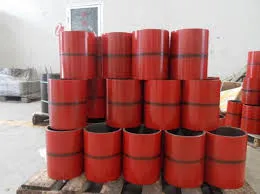- Afrikaans
- Albanian
- Amharic
- Arabic
- Armenian
- Azerbaijani
- Basque
- Belarusian
- Bengali
- Bosnian
- Bulgarian
- Catalan
- Cebuano
- Corsican
- Croatian
- Czech
- Danish
- Dutch
- English
- Esperanto
- Estonian
- Finnish
- French
- Frisian
- Galician
- Georgian
- German
- Greek
- Gujarati
- Haitian Creole
- hausa
- hawaiian
- Hebrew
- Hindi
- Miao
- Hungarian
- Icelandic
- igbo
- Indonesian
- irish
- Italian
- Japanese
- Javanese
- Kannada
- kazakh
- Khmer
- Rwandese
- Korean
- Kurdish
- Kyrgyz
- Lao
- Latin
- Latvian
- Lithuanian
- Luxembourgish
- Macedonian
- Malgashi
- Malay
- Malayalam
- Maltese
- Maori
- Marathi
- Mongolian
- Myanmar
- Nepali
- Norwegian
- Norwegian
- Occitan
- Pashto
- Persian
- Polish
- Portuguese
- Punjabi
- Romanian
- Russian
- Samoan
- Scottish Gaelic
- Serbian
- Sesotho
- Shona
- Sindhi
- Sinhala
- Slovak
- Slovenian
- Somali
- Spanish
- Sundanese
- Swahili
- Swedish
- Tagalog
- Tajik
- Tamil
- Tatar
- Telugu
- Thai
- Turkish
- Turkmen
- Ukrainian
- Urdu
- Uighur
- Uzbek
- Vietnamese
- Welsh
- Bantu
- Yiddish
- Yoruba
- Zulu
Understanding the Function and Applications of Pup Joint Tubing in Oil and Gas Industry
Understanding PUP Joint Tubing in Oil and Gas Operations
The oil and gas industry relies heavily on advanced technology and efficient tools to maximize resource extraction and reduce operational costs. One such critical component in this field is the PUP joint tubing, an essential element in well drilling and production processes.
Definition and Purpose of PUP Joint Tubing
PUP joint tubing, commonly referred to as pup joints, are short lengths of pipe that are used in conjunction with standard tubing to connect various components in a wellbore. These joints are typically between 2 to 10 feet in length and are designed to allow operators the flexibility to adjust overall tubing string lengths, thereby optimizing the configuration for specific operational needs. The versatility of pup joints makes them indispensable for ensuring that the drilling and production processes run smoothly.
Applications in the Oil and Gas Industry
In oil and gas operations, pup joints serve multiple purposes. They can be inserted into the tubing string to accommodate for changes in depth or to alter the spacing of downhole equipment such as packers, pumps, or separators. Furthermore, pup joints are utilized in a variety of settings, from offshore platforms to onshore drilling rigs, showcasing their adaptability across different environments.
One of the primary applications of pup joints is in changing the length of the tubing string to suit particular well conditions. For example, if a well requires additional depth because of geological variances, pup joints can be added to extend the tubing. Conversely, in cases where the well’s production requirements shift, removing a pup joint can help optimize the system.
pup joint tubing

Material and Design Considerations
Pup joints are usually made from durable materials such as carbon steel to withstand the high pressures and harsh environments encountered in oil and gas production. They are designed to meet industry standards and specifications, such as API 5CT and API 11B, to ensure reliability and safety during operations. The ends of pup joints are often threaded to allow for easy connections with other tubing sections, facilitating efficient assembly and disassembly in the field.
Given the importance of maintaining integrity in drilling operations, pup joints are subjected to rigorous testing. This includes pressure testing and inspection for defects to ensure that they can withstand the demanding conditions of downhole environments without failure.
Challenges and Innovations
Despite their advantages, the utilization of pup joints is not without challenges. Issues such as corrosion, fatigue, and wear can affect their lifespan. To tackle these problems, the industry has seen innovations such as the development of corrosion-resistant materials and advanced coatings that enhance the longevity and performance of pup joints. Additionally, employing smart technologies such as monitoring sensors can help predict failures and optimize replacement schedules.
Conclusion
In summary, pup joint tubing plays a vital role in the seamless operation of oil and gas extraction processes. Its ability to enhance flexibility and adapt to various well conditions makes it an invaluable tool in the industry. As technology continues to evolve, the design and application of pup joints are likely to improve further, enhancing operational efficiency while minimizing costs and risks associated with well production. As we look to the future, the ongoing development and refinement of materials, design, and monitoring capabilities will undoubtedly keep pup joints at the forefront of oil and gas technology.
-
Tubing Pup Joints: Essential Components for Oil and Gas OperationsNewsJul.10,2025
-
Pup Joints: Essential Components for Reliable Drilling OperationsNewsJul.10,2025
-
Pipe Couplings: Connecting Your World EfficientlyNewsJul.10,2025
-
Mastering Oilfield Operations with Quality Tubing and CasingNewsJul.10,2025
-
High-Quality Casing Couplings for Every NeedNewsJul.10,2025
-
Boost Your Drilling Efficiency with Premium Crossover Tools & Seating NipplesNewsJul.10,2025







